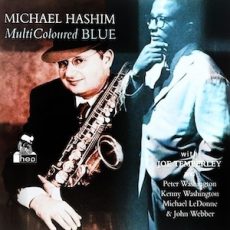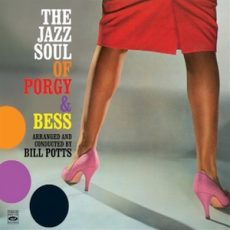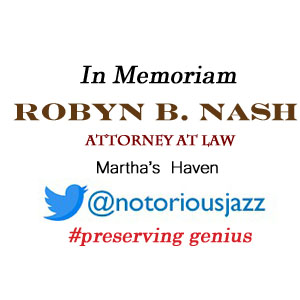
Daily Dose Of Jazz…
Matt Lavelle was born on April 11, 1970 in Paterson, New Jersey and began his music career with Hildred Humphries, a swing era veteran who played with Count Basie and Billie Holiday.
Playing in ensembles led by Sabir Mateen since 2002, three years later Matt began study with Ornette Coleman. He has been a member of the Bern Nix Quartet since 2010 and recorded with Giuseppi Logan the same year.
In 2011 he created the 12 Houses Orchestra. Lavelle is also a visual artist inspired by his Grandfather Fritz Kluber. He is author of the Substack No Sound Left Behind. Matt published a book titled New York City Subway Drama and Beyond, in 2011. In 2013 he published a short story titled The Jazz Musician’s Tarot Deck.
He has recorded nineteen albums as a leader, and another forty-five as a sideman with Nix and Logan as well as Sumari, Eye Contact, Daniel Carter, Bern Nix, Giuseppi Logan, Matana Roberts, William Hooker, Francois Grillot, Steve Swell, Sabir Mateen, Ras Moshe, Assif Tsahar, William Parker, Charles Waters, Barry Chabala, Earth People, Allen Lowe, D3, Julie Lyon, Tom Cabrera, The Cooperative Sound, Stars Like Fleas, Eric Plaks, and Pete Dennis.
Trumpeter Matt Lavelle, who also plays flugelhorn, alto and bass clarinet, continues to perform, record and tour.
More Posts: author,bandleader,clarinet,flugelhorn,history,instrumental,jazz,music,trumpet

Daily Dose Of Jazz…
Jerzy “Duduś” Matuszkiewicz was born on April 10, 1928 in Jasło, Poland and began playing jazz as a youth. He founded a jazz club at the YMCA in Kraków, Poland at age 20. and played with the orchestra of Kazimierz Turewicz.
A music enthusiasts club, Melomani, was founded in 1947 at the Łódź YMCA, a hang-out of nonconformist thinkers during the late 1940s. Moving to Łódź, Poland to study at the new Łódź Film School, he became part of the club and joined the sessions. After only a few concerts, the YMCA was closed due to promoting imperialist ideology using jazz music.
Jerzy founded and led a band in 1950, playing saxophones and clarinet with Marek Szczerbiński-Sart, trumpeter Andrzej “Idon” Wojciechowski, drummer Witold “Dentox” Sobociński, Marian and Tadeusz Suchocki and pianist Andrzej Trzaskowski and bassist Witold Kujawsk. Being separated from Western jazz by the Stalinist regime, they played a repertoire that did not compare to Western standards.
The band was offered space to practise at the Film School, performed informal concerts at the Film School, as well as in bars and private events, once a week. When they received an invitation to play a concert in Warsaw, Poland at the Academy of Fine Arts, they named themselves Melomani.
In 1952, pianist Krzysztof Komeda joined the band and expanded their performance reach. They played at the first jazz festival in Sopot, Poland in 1956. 1958 saw them as the first Polish jazz band invited to perform at the National Philharmonic in Warsaw. The group disbanded that same year.
Until 1964 he performed both in Poland and abroad. The following year he began to mainly compose and conduct music for movies and commercials. Moving to Warsaw with his wife, Grażyna, saxophonist, pianist, composer and bandleader Jerzy Matuszkiewicz died on July 31, 2021 at 93.
More Posts: composer,history,instrumental,jazz,music,piano,saxophone

Daily Dose Of Jazz…
Michael James Hashim was born on April 9, 1956 in Geneva, New York. He began playing saxophone while in elementary school, then played with Phil Flanigan and Chris Flory as a high schooler. He worked with both into the middle 1970s.
In 1976 he toured with Muddy Waters and played with the Widespread Depression Orchestra, which he would later lead. Michael formed his own quartet in 1979, which has included Dennis Irwin, Kenny Washington, and Mike LeDonne as sidemen. In 1980 he toured with Clarence Gatemouth Brown.
Hashim played in New York City in the early 1980s with Roy Eldridge, Jo Jones, Brooks Kerr, Sonny Greer, and Jimmie Rowles. From 1987 he worked often with Judy Carmichael. The Nineties saw him touring China in 1992, and was one of the first jazz musicians ever to do so.
He worked with Flory through the 1990s, and toured North America and Europe regularly. In 1990 with his quartet he recorded Lotus Blossom, an album of Billy Strayhorn songs. In 1998 expanded this ensemble into 11 members as the Billy Strayhorn Orchestra.
Alto and soprano saxophonist Michael Hashim has been a member of the Raymond Scott Orchestra, a mainstay in the George Gee Orchestra, performs with The Microscopic Septet and continues to record as a leader and sideman..
More Posts: history,instrumental,jazz,music,saxophone

Daily Dose Of Jazz…
Tony Vella was born on April 4, 1937 in Terrasini, a Sicily commune in the metropolitan city of Palermo, Itlay. In 1957 he gained immense experience working with big and small configurations. In Italyhe was the main arranger, for numerous important record houses.
From 1972 he dedicated his efforts to cultural activities and the formation of young talents holding theory courses, and practical instrumental and ensemble music applied to jazz music. By 1975 Tony participated in the Pescara the Jazz Festival with the New Jazz Society of Palermo, the only Italian group invited to perform along with the Zoot Sims Quartet, Antony Braxton, Elvin Jones Quintet, Red Norvo Trio, Chet Baker Quartet, Charles Mingus Group, Roland Kirk Quintet and Don Cherry Organic Music Theatre.
Three years later he formed and directed L’Orchestra in collaboration with the Reinhardt Center for their concert season. Organized by the Associazione Siciliana Amici della Musica and introduced to Auditorium SS. Salvatore of Palermo.
In the Eighties Vella was a partr of the Messina Jazz Meeting with the Brass Group Big Band, as orchestra director and arranger. With the band he has collaborated with international musicians Archie Shepp, Hernie Wilkins, Mel Lewis, Sam Rivers, Toshiko Akiyoshi, Paolo Lepore, Franco Cerri, and Danilo Terenzi.
The next decade he established The Tony Vella Fusion Jazz Band entirely composed from young Sicialian musicians. A big band, modeled on some of the great American orchestras like Quincy Jones. The Fusion Jazz Band presented remarkable arrangements of a repertoire that includes Brazilian and popular jazz. They accompanied singers Beppe Vella, Gaetano Riccobono, and Tony Piscopo, as well as numerous musicians such asCalderone Ignazio, Aldo Oliveri, Benedetto Modica, Giovanni Mazzarino, Sergio Munafò, Aldo Messina, and Sebastiano Alioto, among others.
Pianist, organist, composer, arranger and orchestra director Tony Vella continues to perform, conduct and record.
More Posts: arranger,composer,director,history,instrumental,jazz,music,organ,piano

Daily Dose Of Jazz…
William Orie Potts was born April 3, 1928 in Arlington, Virginia. As a child he played Hawaiian slide-lap steel guitar and the accordion in his teens. At 15 he won an accordion competition with a performance of Twilight Time. After hearing Count Basie on the radio he started studying the piano in high school. He went on to attend Catholic University of America in 1946–1947, then formed his own group under the name Bill Parks, which toured in Massachusetts and Florida.
While serving in the Army from 1949 to 1955 he transcribed charts for Army bands. During this time Bill composed and arranged for Joe Timer and Willis Conover’s ensemble, The Orchestra, which was broadcasted on Voice of America radio. He wrote four of the songs on The Orchestra’s 1954 Brunswick Records LP, and recorded some of their live shows, which occasionally featured guest appearances from Charlie Parker and Dizzy Gillespie.
By 1956 he was leading a house band at Olivia Davis’ Patio Lounge in Washington, D.C. and Lester Young booked an engagement there. Potts convinced Young to record with him on two of the evenings. These recordings were later released as the Lester Young in Washington, D.C. sessions.
The following year he worked extensively as a composer, arranger, and performer for Freddy Merkle’s Jazz Under the Dome album which featured Earl and Rob Swope. Soon after this he suffered a crushed vertebra in a car crash and ended up in a body cast for three months. During his recuperation Bill began working on charts and arrangements for an album consisting of jazz reinterpretations of many songs from George Gershwin’s opera Porgy & Bess.
Fully recovered by 1959, he released a session under his own name titled The Jazz Soul of Porgy and Bess for United Artists Records. It featured a nineteen-piece band whose members included Al Cohn, Harry Edison, Art Farmer, Bill Evans, Bob Brookmeyer, Marky Markowitz, Zoot Sims, Charlie Shavers, Earl Swope, and Phil Woods. The album received a five out of five star rating from Down Beat magazine upon its release.
Following this, Potts spent several years working in New York City before returning to the D.C. area, where he worked locally in addition to touring with and/or arranging for Paul Anka, Eddie Fisher, Ella Fitzgerald, Stan Getz, Woody Herman, Quincy Jones, Stan Kenton, Ralph Marterie, Buddy Rich, Jeri Southern, Clark Terry, and Bobby Vinton.
In 1967 he released an album on Decca Records, How Insensitive, with a studio group called Brasilia Nueve. This group included Markowitz and Sims from the Porgy and Bess session , as well as Tito Puente, Chino Pozo, Mel Lewis, Barry Galbraith, and Louie Ramirez.
As an educator Bill taught music theory at Montgomery College from 1974 to 1990 and was the leader of the student jazz band. He also led a big band for occasional performances at Washington’s Blues Alley nightclub in the 1980s.
Retiring to Fort Lauderdale, Florida in 1995, pianist and arranger Bill Potts died of cardiac arrest on February 16, 2005 in Plantation, Florida.
More Posts: arranger,bandleader,history,instrumental,jazz,music,piano


